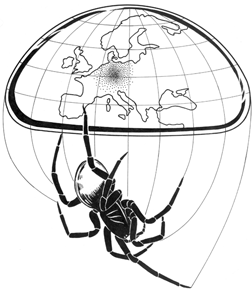Arachnologische Mitteilungen
https://arages.de/zeitschrift/arachnologische-mitteilungenMuster C
Zur Bedeutung von Totholz aus arachnologischer Sicht. Auswertung von Eklektorfängen aus einem niedersächsischen Naturwald
On spiders associated with dead trunks. Investigations in a semi-natural woodland in North-West Germany
Heft 15
The communities of bark-dwelling spiders and false scorpions on standing trunks of living and dead oaks (Quercus robur) of various stages were studied in an ancient woodland in the lowland of NW-Germany. The investigations were carried out from march to october 1996 by use of 28 emergencs traps. For comparative purpose one stem-eclector was used. All traps were installed at a height of 2 meters. The appropriateness of these methods for collecting spiders is discussed. A total of 1828 spiders (41 species) and 57 false scorpions (1 species) were encountered. Abundance gradients are analysed with regard to bark-structure, insolation and age of dead wood. Three species are first recorded in the NW-German Plan: Dipoena torva, Haplodrassus cognatus and Synema globosum. Hitherto the predominant spieders Thyreosthenius parasiticus and Haplodrassus cognatus have not been found on bark abundantly. Thus, the structure of the bark-dwelling fauna varies considerably with region, biotope structure and historical aspects. The occurence of Dendrochernes cymeus, which in Britain is associtated with ancient woodlands, indicates that this species could be restricted to such woodlands in Northern Germany, too.
spiders; pseudoscorpions; dead oak trunks; emergence traps ancient woodlands; North-West Germany


